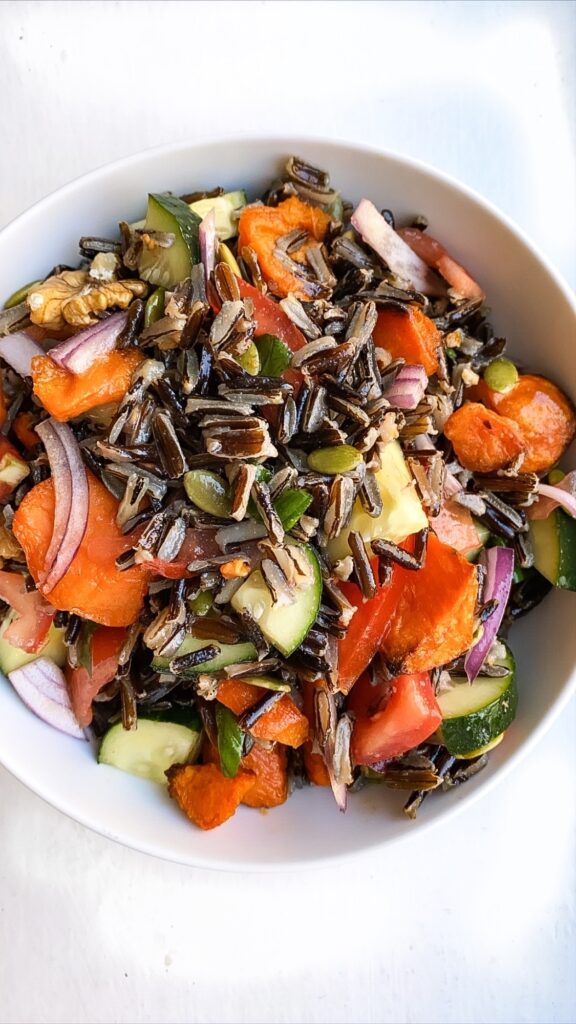
Did you know that wild rice isn’t rice? It’s a species of grass that produces edible seeds resembling rice. It has a nutty, earthy flavor and chewy texture. Wild rice is naturally gluten-free and contains more protein than regular rice. It also contains iron, potassium, selenium, and it is high in antioxidants.
Here’s a simple and delicious way to enjoy wild rice at home!
Ingredients
1 cup uncooked wild rice, soaked 3-4hrs*
1 1/2 cups of water or homemade vegetable broth
1 tablespoon olive oil
*I recommend soaking wild rice a few hours before cooking to help flush out any heavy metals and help with digestion.
Instructions
- Place a saucepan over medium heat. Add water or vegetable broth and bring to a boil.
- Add the rice and olive oil and combine.
- Reduce heat to a simmer and cover. Let cook 20-30min. Wild rice expands and bursts open when it’s cooked.
- To make sure it’s ready, you can taste a few morsels. If it has not reached the desired tenderness, keep cooking for a few minutes longer. You may need to add a little water or vegetable broth if it has all been absorbed.
- Once tender fluff with a fork and serve.
Bonus Tip: Wild Rice is delicious on its own. You can also add chopped veggies like cucumber, tomatoes, red onion, olives, walnuts and top with a nice helping of olive oil or avocado oil plus a squeeze of lemon juice, salt and pepper! This salad is a favorite in our house. Enjoy!
Versión En Español
Beneficios para la salud del arroz salvaje y cómo cocinarlo
Sabias que el arroz salvaje no es arroz? Es una especie de hierba que produce semillas parecidas al arroz. Tiene un sabor a nuez y textura suave. El arroz salvaje es naturalmente libre de gluten y contiene más proteínas que el arroz normal. También contiene hierro, potasio, selenio y es rico en antioxidantes.
Como cocinar el arroz salvaje
Ingredientes
1 taza de arroz salvaje crudo, remojado 3-4 horas*
1 1/2 tazas de agua o caldo de verduras casero
1 cucharada de aceite de oliva
*Recomiendo remojar el arroz salvaje unas horas antes de cocinarlo para ayudar a eliminar los metales pesados y ayudar con la digestión.
Instrucciones
- Coloque una cacerola a fuego medio. Agregue agua o caldo de verduras y hierva.
- Agregue el arroz y el aceite de oliva y combine.
- Reduzca el fuego a fuego lento y cubra. Dejar cocinar 20-30min. El arroz salvaje se expande y se abre cuando se cocina.
- Para asegurarte de que esté listo, lo puedes probar. Si no ha alcanzado la textura deseada, siga cocinando durante unos minutos más. Es posible que deba agregar un poco de agua o caldo de verduras si todo ha sido absorbido.
- Una vez tierno, esponjar con un tenedor y servir.
Nota: el arroz salvaje es delicioso por sí solo. ¡También puede agregar verduras picadas como pepino, tomate, cebolla roja, aceitunas, nueces y una buena porción de aceite de oliva o aceite de aguacate más un poco de jugo de limón, sal y pimienta! Esta ensalada es una de las favoritas en nuestra casa. ¡Espero que la disfrutes!
